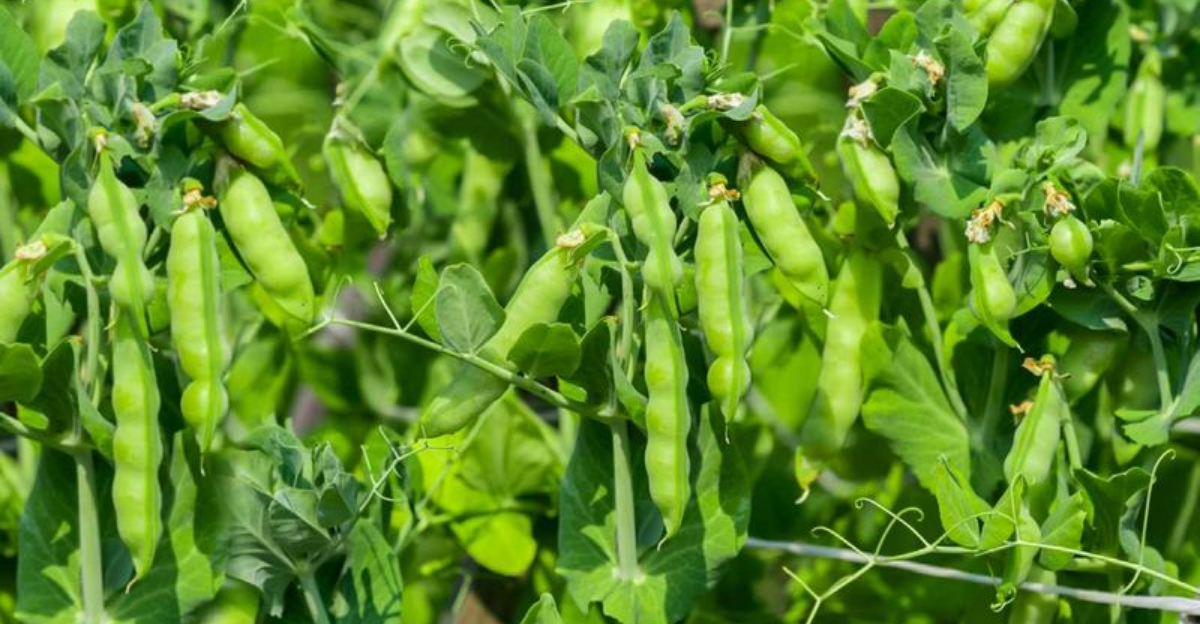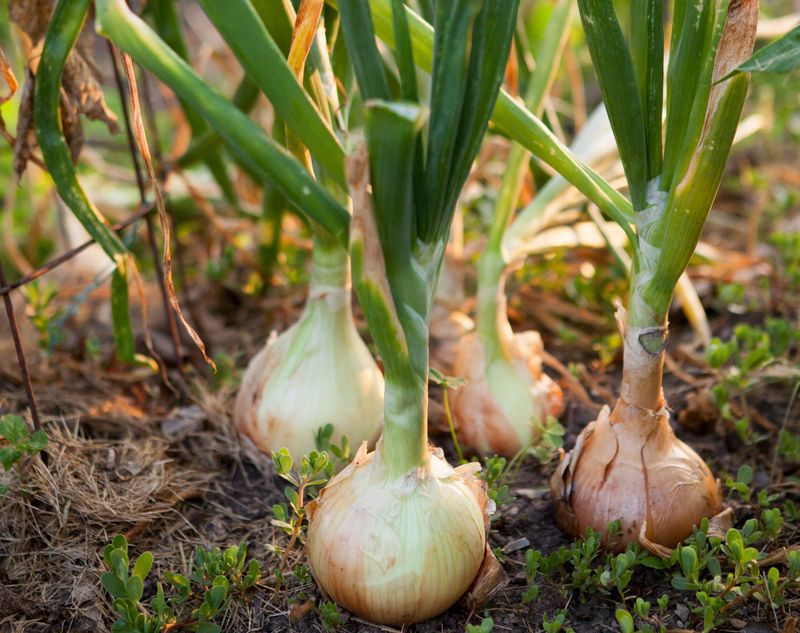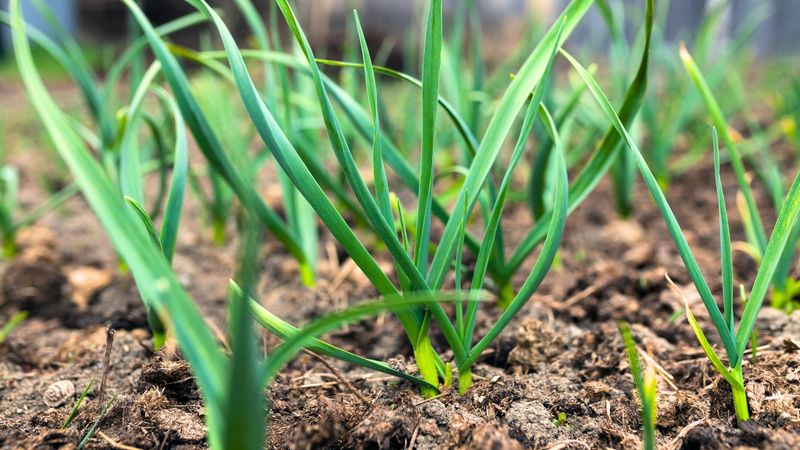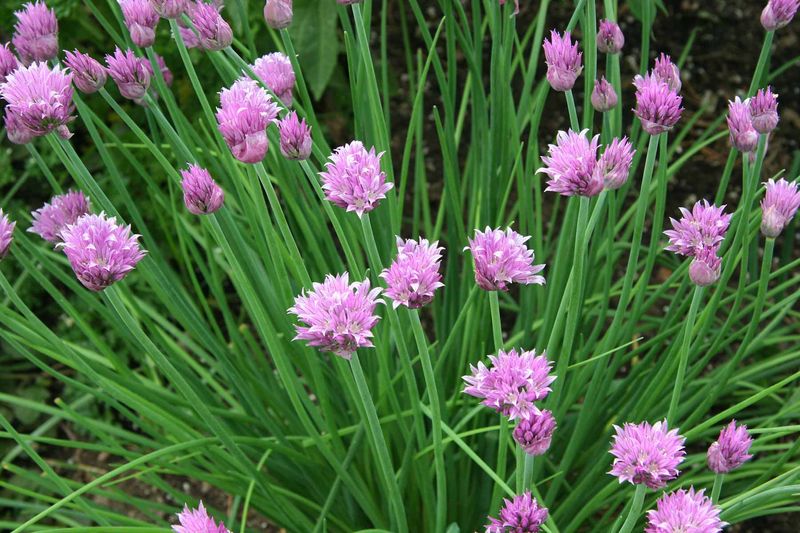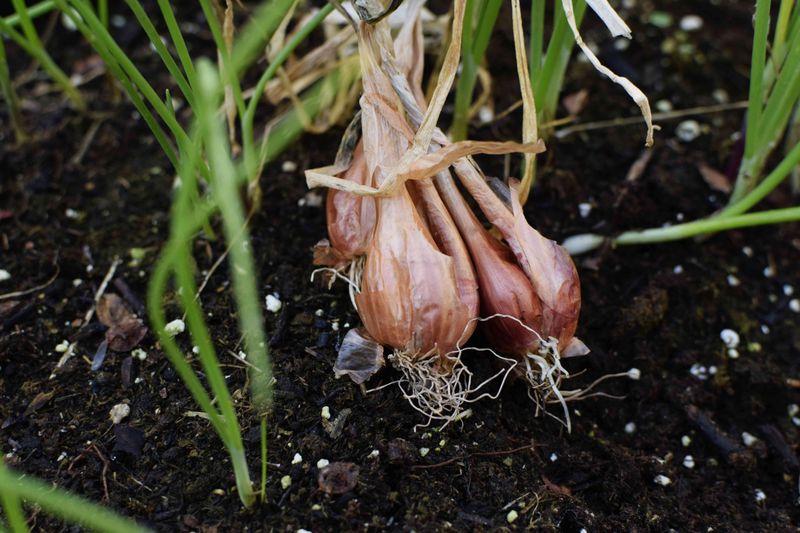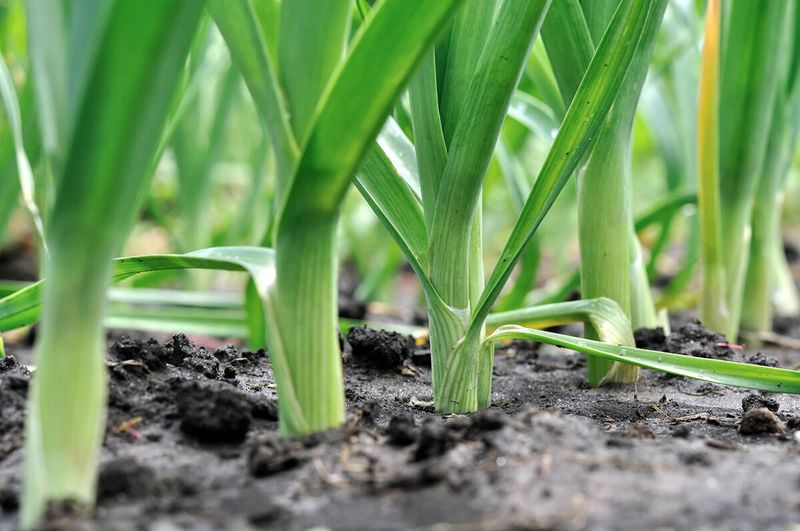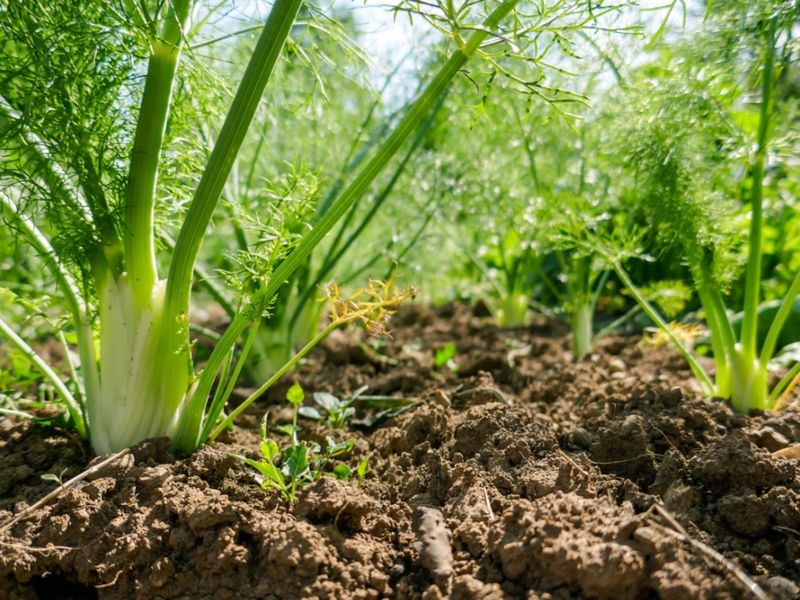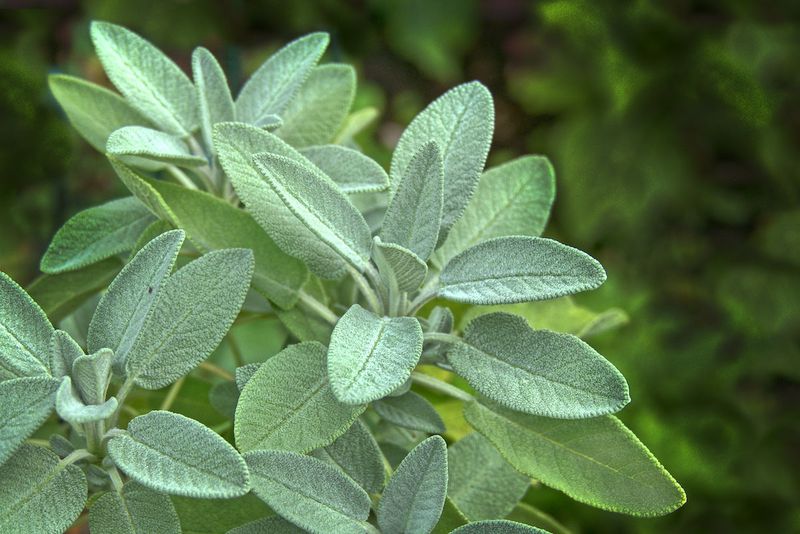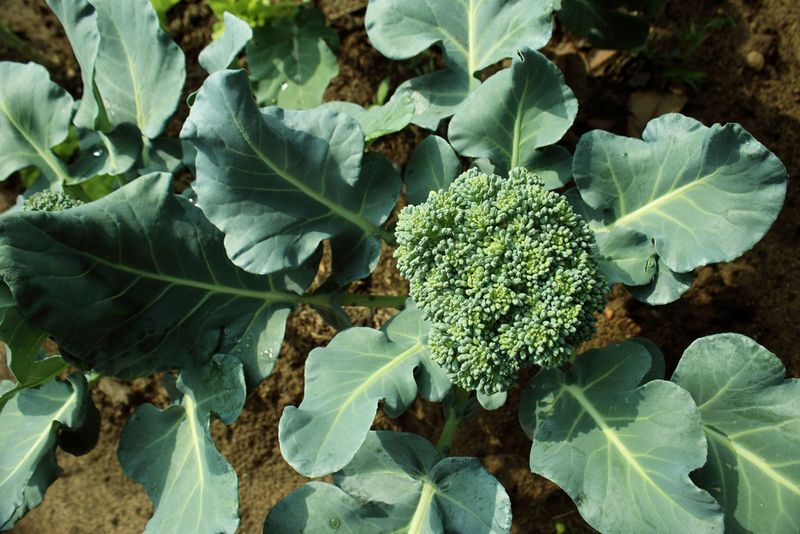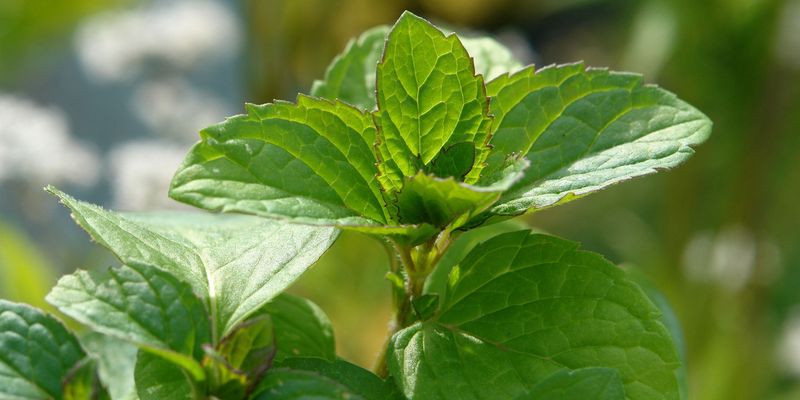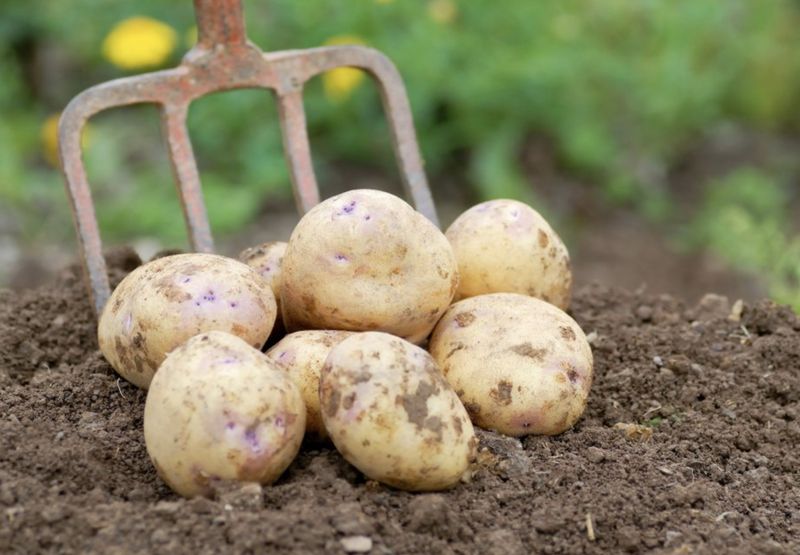Choosing the right companions for your pea plants can significantly impact their growth and yield. Certain plants, when grown nearby, can compete for nutrients, harbor pests, or affect the peas’ growth negatively.
This blog post explores ten plants you should never plant near your precious pea plants, providing insights into why each one is a poor companion choice.
1. Onions
Onions, while a kitchen staple, are not friendly neighbors for peas. They release growth-inhibiting substances into the soil, which can stunt the growth of peas nearby.
These compounds can affect the delicate root systems of pea plants, leading to reduced yields. Furthermore, onions require nutrients that peas also need, causing a competition that peas often lose.
Avoid planting onions and peas together to ensure your garden thrives. Instead, consider planting onions with carrots or lettuce, which are more compatible. By keeping incompatible plants apart, you can create a more harmonious garden space.
2. Garlic
Garlic, much like onions, produces chemicals that can hinder the growth of adjacent pea plants. These substances interfere with the root development of peas, potentially leading to poor plant health. The allelopathic nature of garlic means it releases natural toxins that can damage neighboring plants.
In addition to inhibiting growth, garlic competes for essential nutrients that peas require for optimal development. Opt to plant garlic far from your pea patch to prevent these negative interactions. By doing so, you can ensure both your garlic and peas grow robustly without hindrance.
3. Chives
Though chives are a delightful herb, they don’t pair well with peas. Their close relation to onions and garlic means they share similar growth-inhibiting properties. Chives’ presence in the garden can stunt pea growth, affecting their overall yield.
Additionally, chives and peas vie for similar nutrients, creating unnecessary competition. If you love chives, consider growing them away from your peas to prevent these issues.
A better match would be chives alongside carrots or tomatoes, where their growth won’t be encumbered. This separation ensures a thriving and balanced garden.
4. Shallots
Shallots, another member of the allium family, pose similar problems for peas as onions and garlic. They emit growth-inhibiting substances that can make peas struggle to thrive. This interference is particularly problematic during the delicate early stages of pea growth.
Additionally, shallots and peas compete for water and nutrients, further complicating their coexistence. For a more harmonious garden, plant shallots away from peas.
Consider pairing shallots with other vegetables like tomatoes or peppers, which don’t suffer from the same inhibitory effects, promoting healthier growth overall.
5. Leeks
Leeks are beloved for their culinary uses but are problematic when grown near peas. Like other alliums, leeks release chemicals that can suppress pea growth. These substances affect the root development of peas, leading to weaker plants and poorer yields.
Furthermore, leeks compete with peas for similar nutrients, which can be detrimental to both plants. To avoid these issues, keep leeks separate from your pea plants.
Instead, consider growing leeks with carrots or celery, which can share space more amicably, fostering a healthier garden environment.
6. Fennel
Fennel is notorious for being a poor companion to many plants, peas included. It releases a compound that can significantly inhibit the growth of neighboring plants. Peas are particularly sensitive to these allelopathic effects, which can stifle their development.
Beyond its chemical warfare, fennel also competes for soil nutrients, further troubling your pea plants. To ensure your peas reach their full potential, plant fennel well away from them.
Alternatively, fennel can be a great standalone plant or paired with dill, where its growth-inhibiting properties won’t cause harm.
7. Sage
Sage, while a wonderful herb for cooking, isn’t a friend to peas in the garden. Its root secretions can negatively impact the growth of pea plants nearby. These secretions can create an inhospitable environment for peas, affecting their ability to thrive.
Additionally, sage can overshadow peas, blocking sunlight and further stunting their growth. For the best results, plant sage away from peas and pair it with rosemary or thyme instead. Such combinations ensure each plant can grow unhindered, maintaining a healthy and productive garden.
8. Broccoli
Broccoli may be a garden favorite, but it doesn’t mesh well with peas. It competes intensely for nutrients and space, often overshadowing peas with its large leaves. This competition can result in stunted pea growth and reduced yields.
Broccoli’s extensive nutrient demands can deplete the soil, leaving peas with insufficient resources. To promote healthier growth, keep broccoli and peas in separate garden sections.
Instead, broccoli pairs well with spinach or radishes, which don’t compete as aggressively, allowing all plants to flourish.
9. Mint
Mint is a vigorous grower that can quickly take over garden space, crowding out more delicate plants like peas. Its aggressive nature means it can easily overshadow pea plants, depriving them of sunlight and space.
Moreover, mint’s root system competes fiercely for nutrients, often at the expense of neighboring plants. For healthier pea plants, keep mint confined to its own pot or a separate garden area.
Consider growing mint with rosemary or basil instead, where its robust growth won’t hinder other plants, allowing each to thrive.
10. Potatoes
Potatoes may seem benign, but they’re not ideal companions for peas. Their sprawling growth habit can infringe on the space and light peas need to grow properly.
Additionally, potatoes share susceptibility to several diseases that can also affect pea plants.
This shared vulnerability increases the risk of spreading infections, compromising both crops. To minimize disease transmission and competition, plant potatoes away from pea plants.
Instead, potatoes grow well with beans or corn, which aren’t as prone to shared diseases, ensuring a healthier garden environment overall.
